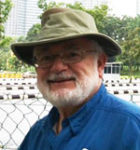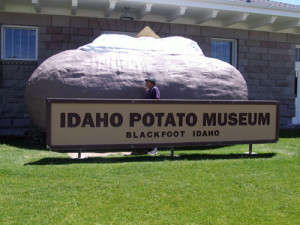

RICHMOND, California — Fantasize. Plan an imaginary trip. Breakout mentally from pandemic limitations The world is awash with museums. It demonstrates the human need to remember and pass on artifacts of the heights and depths of civilization.
The Reader’s Digest in July 2019 highlighted one quirky museum per state: the Alaska Hammer Museum; the Banana Museum in Mecca, in California’s Riverside County; Colorado’s Washing Machine; Mississippi’s Apron; Iowa’s Matchstick; and Ohio’s Pencil Sharpener museum. These are brick and mortar museums with street addresses, not the burgeoning online website museum. The author, Marissa Laliberte, overlooked the venerable Kool-Aid Museum in Hastings, Nebraska, in favor of the Klown Doll Museum in Plainview. I’ve been to the Mustard Museum in Horab, Wisconsin, and Idaho’s Potato Museum in Blackfoot.
There were three museums of handbags and purses in Seoul, South Korea; Little Rock, Arkansas; and Amsterdam, The Netherlands. The last with over 5,000 items was the first museum to close because of Covid 19. We’ve been to three shoe museums; Bata’s in Toronto; Salvatore Ferragamo in Florence; and the Footware or Footwear Museum in Barcelona’s 16th century Gothic quarter, which has since closed, not due to Covid. Sounds like a little leather fetish; there is no museum for the wallet, billfold, bifold, or money clip.
Catholics could have the most museums if you count churches and cathedrals. Ali Fitzgerald highlighted “The Museum of Purgatory” in the online The New Yorker, December 21, 2020. It was in print in the December 28 edition, and arrived in the mail on December 26, a perplexing conundrum.
Jewish museums probably compete with children’s museums for second place. Jewish museums in Cordoba, London, Paris, Vienna, Prague, Shanghai, throughout Israel and all of Germany record hundreds of years of settlement, uprooting, the Holocaust, refugee rescues and repatriation. Our houses of worship usually have an obligatory glass case of ritual items, photographs of past rabbis, cantors, congregation presidents and youth groups, as well as gift shops staffed by volunteers. The glass case in the Tulsa shul is a vivid over twenty-year-old memory. We have specially built for the purpose municipal museums identifying the contribution of Jews in society, and Judaica sections in general museums such the Auerbach collection in the Omaha’s Joslyn Art Gallery. Omaha like many cities has a Jewish Community Center which also houses a museum dedicated to regional Jewish history. They are visited by locals, school groups, and tourists.
Museum names include the terms Jewish, United States, National, Contemporary, Heritage, Holocaust, Tolerance, Children’s, cities and states (Alaska, Florida), local Jewish Historical Societies and the names of the honored and the donors. The latest iteration of the Museum of the Southern Jewish Experience is slated to open in New Orleans in 2021.
Cemeteries stand for identity, covenants, and perhaps eternal communal separation. English and Hebrew record names, birth and death dates, iconography with epigraphs on stone and bronze, upright and flat to the ground. The underground library of unread books, the Genizah, holds discarded Jewish holy books.
The religion-based museums are a statement of faith, architectural grandeur and permanence. The smaller specialty displays are idiosyncrasies, the result of private desires, benign obsessions reflecting resolve, consistency, patience, limited budgets, sympathetic scouts, and a condoning family. A friend’s husband’s second cousin recently left his collection of airline barf bags to the Smithsonian Institution.
On road trips we pass state historical society markers, rural county museums filled with antique farm machinery and kitchen reconstructions from before the introduction of gas and electricity. Beware of roadside attractions announcing dinosaurs and fossils, unless they are state and federal parks. When a ship comes into port tourists receive a list of local attractions, including some hole in the wall museums, besides churches and colorful streets.
What would I curate? My “Museum of Detritus, Ephemera and the Quotidian,” a play on Orhan Pamuk’s brilliant novel, The Museum of Innocence (2008), is more than chachkas (there are at least ten spellings of this lovable Yiddish word). It’s what we have haphazardly collected, perhaps in Mari Kondo terms, what we “love” and cannot dispose of, yet. Many readers have probably amassed kiddush cups, menorahs, dreidels, haggadahs, seder plates, and havdalah spice boxes, some in dark closets, some in glass display cabinets; it’s human to cherish.
There are no museums dedicated to the 1918 Influenza Pandemic, though it has generated exhibits. No doubt 2020-21 COVID exhibits will find their place in established museums. Serious and more lighthearted subjects require imagination and curation. Visit a museum in 2021, perhaps the smaller the better. They need your patronage.
*
Oliver B. Pollak, Ph.D., J.D., a professor emeritus of history at the University of Nebraska Omaha, and a lawyer, a member of the Institute for Historical Study, is a correspondent now based in Richmond, California. He may be contacted via oliver.pollak@sdjewishworld.com